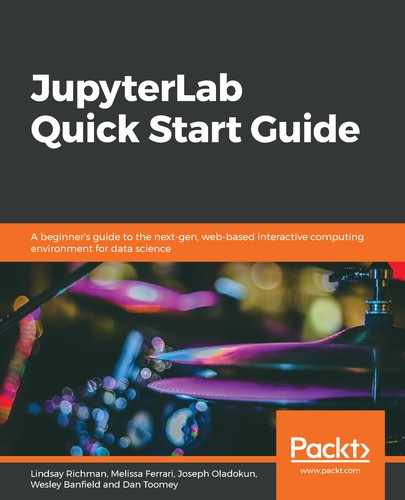Book Description
Get to grips with the basics of JupyterLab and its web interface with the help of this quick start guide
Key Features
- Manage JupyterLab kernels, code consoles, and terminals, and share your work over the cloud
- Organize your data solutions within JupyterLab
- Install and configure extensions on JupyterLab using easy-to-follow examples
Book Description
JupyterLab is a web-based interface and the natural evolution of Jupyter Notebook. This guide will take you through the core commands and functionalities of JupyterLab and help you enhance your JupyterLab productivity.
Starting with the installation of JupyterLab, this book will give you an overview of its features and the variety of problems it solves. You'll see how you can work with external files inside the platform, and understand how to use the code console and terminal. This will help you have distinct control over the scripts you work with. As you progress, you'll get to grips with the extensions available in JupyterLab, and gain insights into adding extensions to introduce new functionality in the interface. This book also covers widget operations within your document, different design patterns in JupyterLab, and the various methods for exchanging Notebooks. Additionally, you'll explore how to host JupyterLab Notebooks on GitHub.
By the end of this Jupyter book, you'll have become well-versed with all the components of JupyterLab and be able to use it collaboratively within your data science teams.
What you will learn
- Install JupyterLab and work with Jupyter Notebooks
- Host JupyterLab Notebooks on GitHub and access GitHub resources in your Notebooks
- Explore different methods for exchanging Notebooks
- Discover ways in which multiple users can access the same Notebook
- Publish your Notebooks with nbviewer and convert them into different formats
- Attach and operate widgets within your Notebooks using a JupyterLab document
- Use JupyterLab to work collaboratively with multiple data scientists in your teams
Who this book is for
This book is for data scientists and data analysts who are new to JupyterLab as well as for existing Jupyter users who want to get acquainted with its impressive features. Although not necessary, basic knowledge of Python will be helpful.
